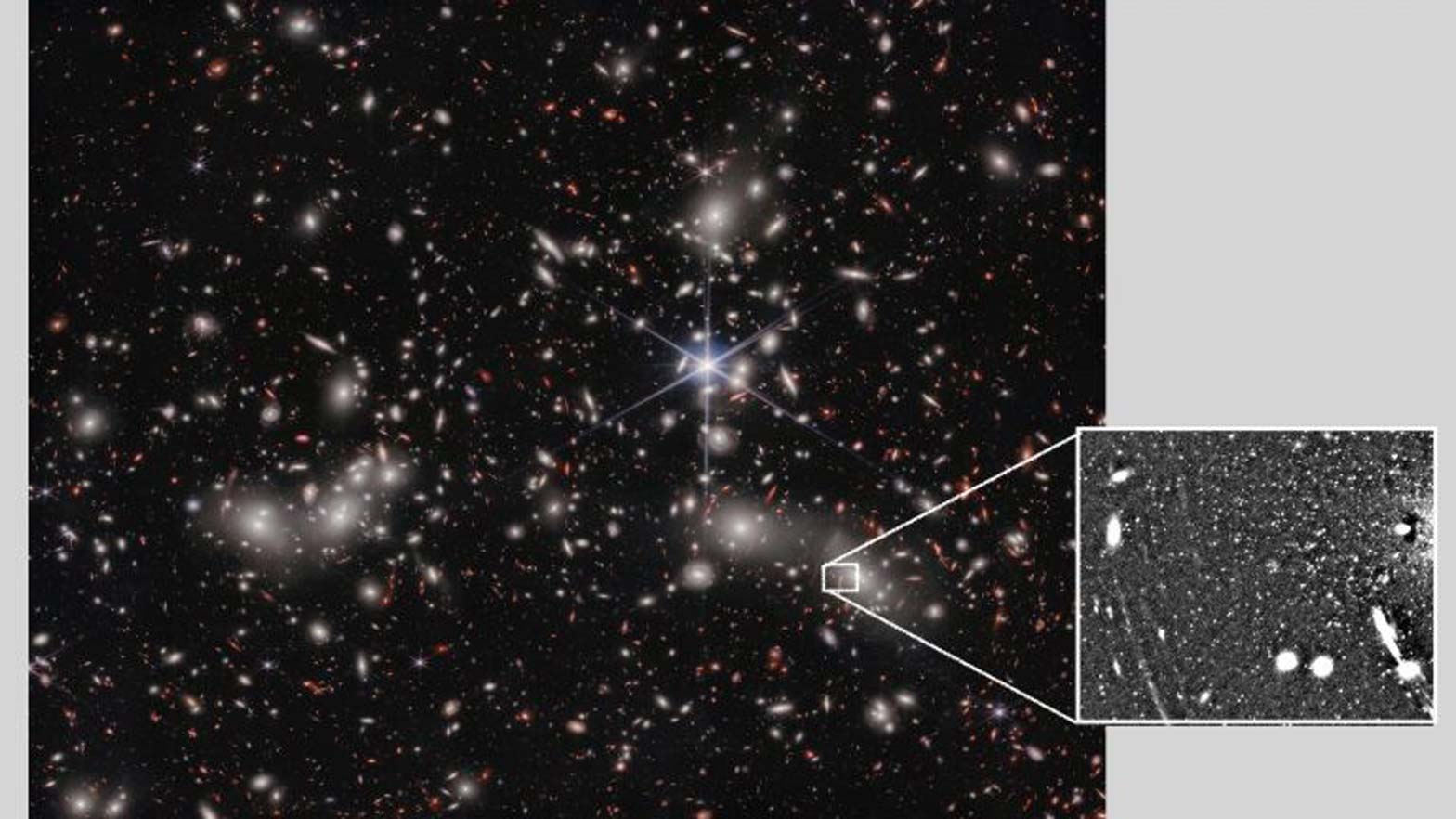Using deep imaging data from JWST, two McMaster astronomers look 3.5 billion years into the past to study a remote giant cluster of galaxies.
Marta Reina-Campos, a postdoctoral fellow and Canadian Institute for Theoretical Astrophysics National Fellow, and William Harris, an emeritus professor, collaborated in a new study to study a galaxy cluster called Pandora’s Cluster.
Also known as Abell 2744, the Pandora Cluster contains thousands of galaxies of all sizes. It is so distant that the light we see today was emitted 3.5 billion years ago — about when life first originated on Earth.
Reina-Campos, a theorist, creates sophisticated computer simulations of galaxies to track the development of their globular clusters from their inception to the present.
On the other hand, Harris is an observational astronomer specializing in measuring the actual characteristics of globular clusters in significant galaxies, such as those found in Abell 2744.
The detailed images in the observed bands show many small, unresolved sources in the field. Most of these sources, numbering over 10,000 in our measurements, are identified as globular clusters (GCs) or ultra-compact dwarfs. These objects are mainly found in the outskirts of the five most giant galaxies in A2744 but also include GCs around certain satellite galaxies and in the intergalactic medium.
Harris said, “Until now, we’ve been restricted to measuring the properties of these star clusters just in galaxies in the nearby universe.”
“This is like dedicating a person’s history by only working from a present-day photo of them. What about all that came before? The James Webb Space Telescope has opened up a huge new range of space and time for exploration.”
Reina-Campos said, “For the first time, we can see directly what the features of the star clusters were like that long ago. This lets us fill in more of their past story and adds entirely new tests for what we predict from theory. It will also help us understand more about the galaxies’ histories.”
The “lookback time” for Abell 2744 allows us to observe things as they were approximately a quarter of the way back to the Big Bang, offering insights into the universe’s early stages.
Harris said, “The images that JWST produces are incredible — we’ve never seen anything like this. It’s going to be one of the premier instruments in the entire history of science.”
Journal Reference:
- William E Harris, Marta Reina-Campos. JWST photometry of globular cluster populations in Abell 2744 at z = 0.3. Monthly Notices of the Royal Astronomical Society. DOI: 10.1093/mnras/stad2903

Shambhu Kumar is a science communicator, making complex scientific topics accessible to all. His articles explore breakthroughs in various scientific disciplines, from space exploration to cutting-edge research.


